 Experience the Eiffel Tower With Climbing, Dining, and Views
Experience the Eiffel Tower With Climbing, Dining, and Views
Many say that the Eiffel Tower offers the best views in Paris — and who could really argue? But there is so much…
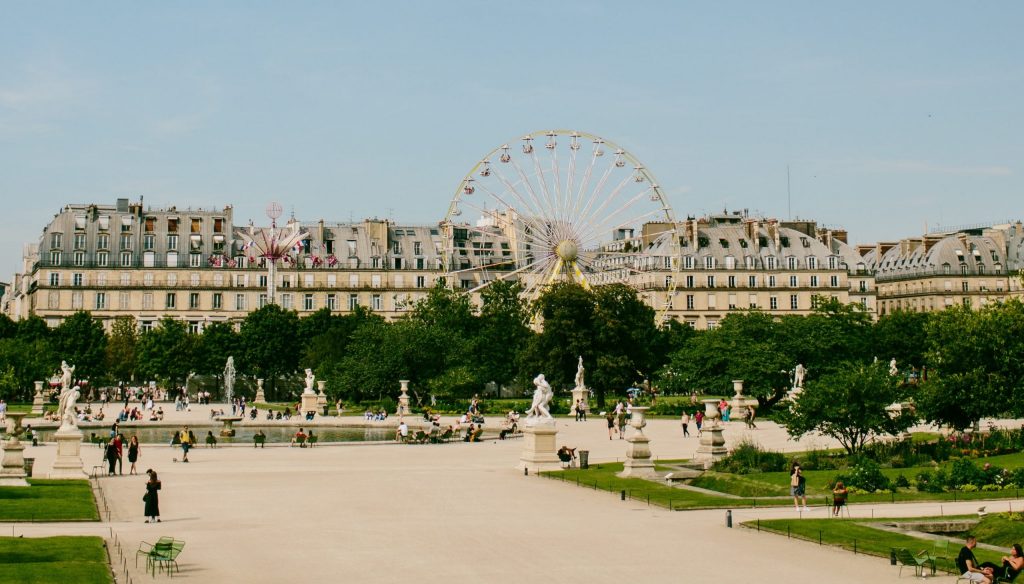
The beautiful garden in the center of Paris, the Jardin des Tuileries, is probably my favorite spot to relax and explore. Why, you might ask? There are so many local visitors, events, and beautiful sights to enjoy — among these, the impressive sculptures that dot the grounds.
Here’s everything you need to know about visiting the Tuileries Gardens, including how to find them, what you can see there, and even some of those special events you won’t want to miss.
The Tuileries Gardens are located in a large square, parallel to the Rue de Rivoli in Paris, in front of the entrance to the famous Louvre Museum. On the grounds of the Tuileries, there are two more famous museums at the far end, opposite the Louvre Museum. One is called the Jeu de Paume and the other is the Musée de l’Orangerie. If you want to visit with a local, one of our Paris tours includes an outdoor walking tour of the sites around the Louvre, including the Tuileries Gardens.
The Jeu de Paume has a wonderful collection of postmodern photography and other media in their exhibits, while the Musée de l’Orangerie is an impressive spot to view Impressionist and Post-Impressionist paintings.
As you walk through the gardens, you’re surrounded by elevated sculptures and life-size statues typical of Paris, a city rich in history and art.
The outdoor collection began when the Tuileries palace was taken over and burned in 1871. There are replicas and real statues from work by iconic artists, such as Rodin, who has a museum in Paris dedicated to his work.
I find the statues in these gardens fascinating. They beautifully contrast with everyday life with their elegance and thought-provoking stature. They’re somehow not valuable enough to be protected in a museum, but it’s just as well since they’re perfect for this garden.
Here is an introduction to three of the most well-known statues in the Tuileries gardens.
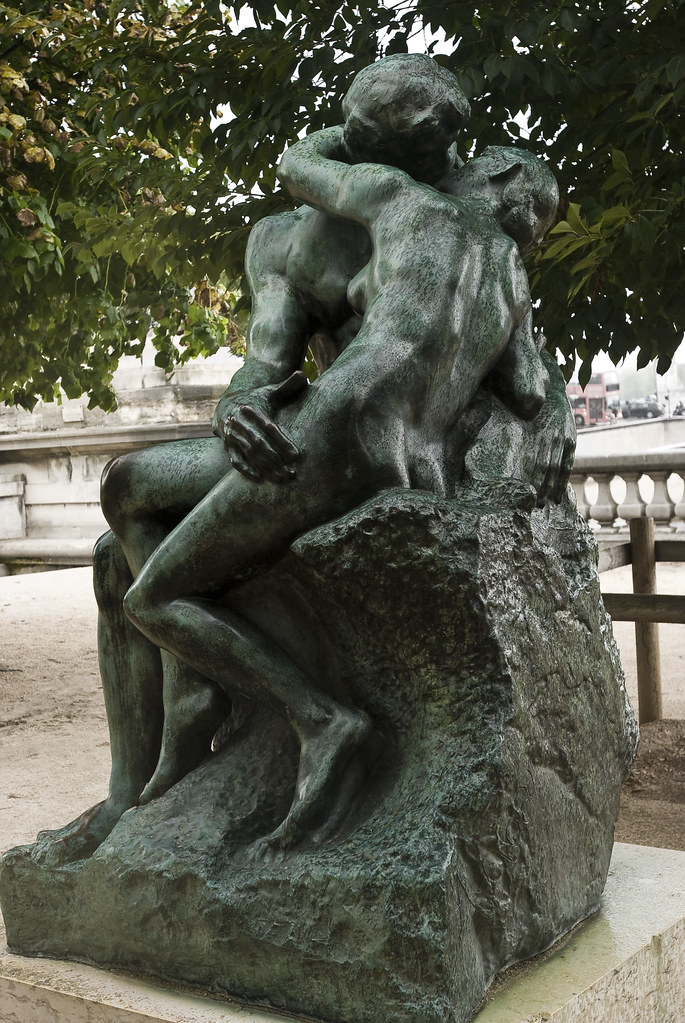
The Kiss — or Le Baiser in French — can be found by the entrance of the Musée de l’Orangerie. It’s a bronze replica from a part of the massive sculpture, “The Gates of Hell,” which is displayed at the Rodin Museum. The couple depicted in the sculpture is inspired by characters from a 14th-century epic poem by Dante. Here’s the short version of their story: A noblewoman falls in love with her husband’s brother, and both are banished to hell.
If that seems like a downer, consider that this piece was separated from the rest of the sculpture so it could stand on its own. Instead of focusing on their punishment, viewers who find this statue can bask in the love that this couple so beautifully symbolizes.
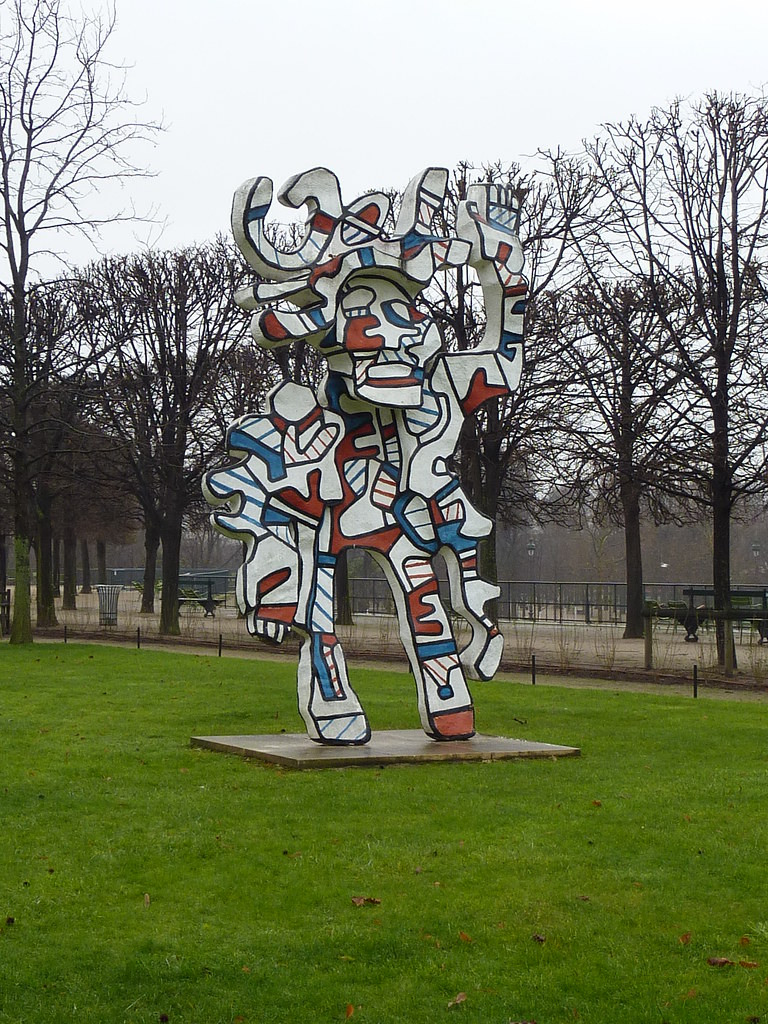
In French, this sculpture is called Le Bel Costumé. This colorful piece can be found next to the Jeu de Paume in the Tuileries Gardens. The modern art piece contrasts nicely with the more traditional, classical sculptures found in the rest of the gardens.
What’s your interpretation of this piece? Whatever it is, I think it’s fair to say it’s the right one as long as it means something to you. I enjoy artwork like this — something not based off a story or strictly defined by the artist. In a way, it can belong to anyone who assigns it meaning.
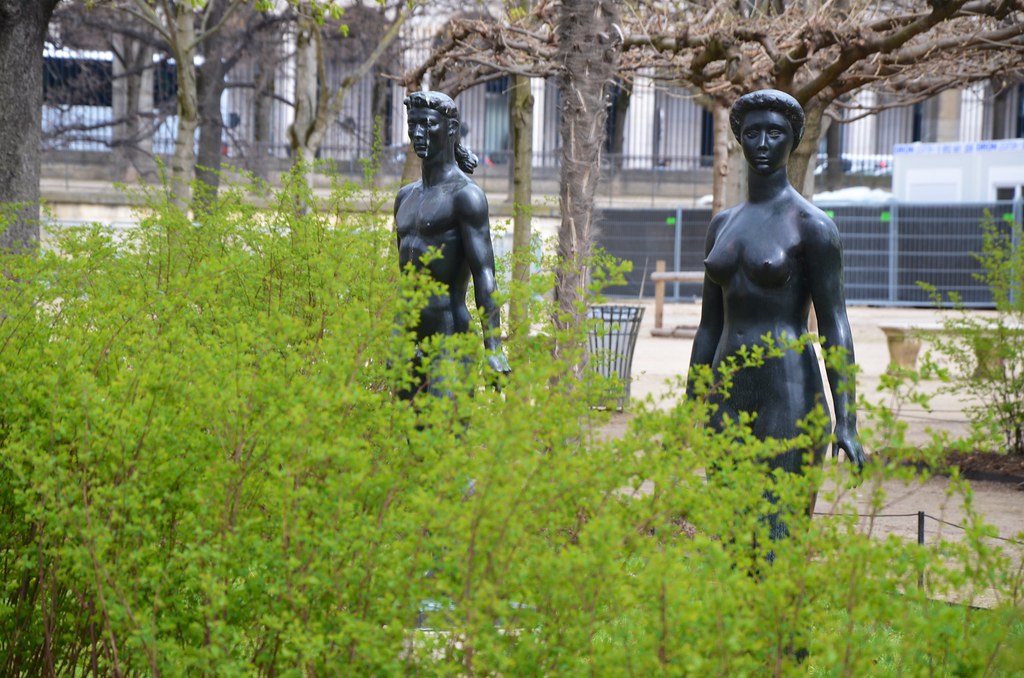
Right off the main alley, if you’re approaching from the Louvre Museum, you’ll find two statues under a cluster of trees. Both are by Paul Belmondo, a sculptor born in French Algeria in the late 19th century.
One is Apollo, or Apollon in French, the Greek god of light while the other is called Jeanette. Both sculptures beautifully capture the Neoclassical ideal, which portrays the edges of the human body as soft curves, a style popularized during the Renaissance.
There’s a lot more than art here. You have a variety of flowers and plants to admire, several fountains, and seating so you can just watch the ducks swim by. In a busy tourist schedule, this can be a nice place to slow down.
During the holidays, the Tuileries Gardens become the ultimate Christmas fair with shops and rides to enjoy. Boutique tents sell trinkets, which make great presents for the whole family, such as jewelry, nesting dolls, keychains, and purses. There is usually a Ferris wheel and a few smaller paid attractions, like rides. I’ve stopped by before to get a holiday snack — a zebra-striped chocolate-covered marshmallow — and noticed how much fun everyone was having. Families, in particular, love to bring their children to take pictures with Santa and the reindeer statues while enjoying the thrills of the carnival rides.
The Jardin des Tuileries has other annual events, too. The FIAC, an art fair held every fall, has public exhibits in the garden anyone can enjoy. Another annual event worth noting is Paris Fashion Week, when fashion designers and models from around the world converge on the gardens, and the section of tents by the Rue de Rivoli becomes an opportunity to run in to any of them.
The Tuileries Gardens are absolutely free to visit. Even when there are annual events held here, such as the Christmas fair, FIAC, and Paris Fashion Week, they only take up part of the gardens, so you can always rely on most of the space remaining available.
Yes, it’s a free attraction in Paris — definitely worth adding to your bucket list.
“Tuileries” is the name for the royal palace in Paris that was eventually burned down in 1871. In French, the word ‘tuileries’ refers to tile manufacturing sites. The garden is named “Tuileries” because of the tile kilns that originally were located in the current Tuileries Gardens before the palace was constructed.
Yes, the park is only open from 7 a.m. to 11 p.m. in the evening. As it gets late, you will be kindly notified by the guards around 10:30 p.m. to get ready to leave.
I hope this guide has been helpful and insightful for your next visit to the Tuileries Gardens while you’re in Paris. There are many more sculptures to see than the few I mentioned above. In addition to discovering these statues, if you’re a nature-lover more than an art-lover, you’ll want to return each season so you can see how the plant displays change and evolve.
Any time of year, the Jardin des Tuileries is a perfect stop on your busy itinerary. Don’t rush off after your Louvre Guided Tour. Take some time to explore these gardens and get to know the everyday beauty that you can find in Paris.
 Experience the Eiffel Tower With Climbing, Dining, and Views
Experience the Eiffel Tower With Climbing, Dining, and Views
Many say that the Eiffel Tower offers the best views in Paris — and who could really argue? But there is so much…
 9 Things To Make You Fall Hopelessly in Love With Paris
9 Things To Make You Fall Hopelessly in Love With Paris
There’s a reason Paris is known as the City of Love. Everything — from its charming streets to ornate architecture, the café culture…
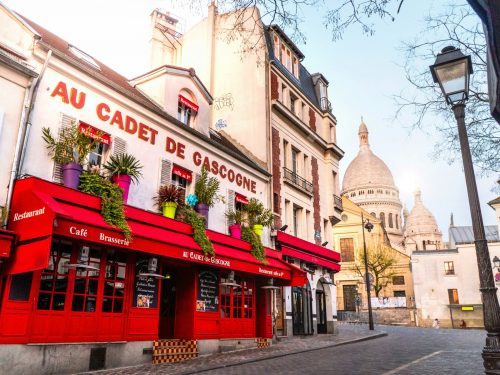 Paris on a Hill: Montmartre, the Sacré-Cœur, and Beyond
Paris on a Hill: Montmartre, the Sacré-Cœur, and Beyond
Montmartre is the Paris that you came to see. It’s the whimsical, charming neighborhood most often featured in international depictions of Paris. It…